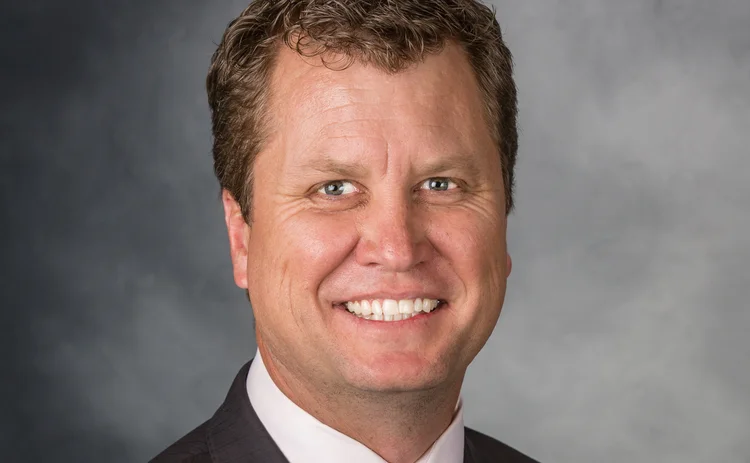
Deal of the year: Societe Generale
Energy Risk Awards 2017: SocGen helps turn Castleton into major East Texan shale participant

When Castleton Commodities International decided to expand its gas footprint last year, it turned to Societe Generale to arrange a more than $1 billion shale acquisition and create a complex commodity price risk management solution. Overcoming severe uncertainty in the financial markets, the deal was heavily oversubscribed and turned Castleton into a major participant in East Texas shale.
“The oil and gas financing and syndication markets were under a lot of stress and uncertainty in 2016, driven by the particularly volatile and distressed commodity markets, but also by a layer of regulatory uncertainty,” explains Graeme Bullen, Societe Generale’s head of reserve-based finance for the Americas. “This put a question mark over structuring and syndicating a large transaction [at that time].”
Societe Generale had a long-running relationship with the buyer, having arranged Castleton’s inaugural reserve-based lending facility in 2014 as well as subsequent financing and hedging solutions. So when the commodities merchant decided to expand its natural gas footprint, Societe Generale was a strong contender for both its financing and hedging needs. “Castleton has a very strong risk management culture and wanted to lay off as much of the commodity price risk for the acquisition as possible, particularly during the time between signing the purchase agreement in September and closing the deal in November,” says Craig Breslau, Societe Generale’s managing director of energy commodities and global markets, for the Americas. As the deal was due to complete during one of the natural gas shoulder seasons – when demand is at its lowest and prices soften – a further complication arose as Castleton would not officially own the asset during that period.
After discussing a number of ideas, both organisations decided that Societe Generale would use a pre-close hedge to address the risk of price volatility during the time between the execution of the purchase and sale agreement (PSA) and the deal’s completion – roughly 60 days, according to Breslau. In order to address the asset-ownership issue, Societe Generale executed the hedges with the seller of the assets, Texas-based exploration and production company Anadarko Petroleum, with whom it has a long track record as a hedge provider. It did so in September and then the hedges were novated to Castleton when the deal closed in mid-November.
“It was phenomenal for Castleton to have the previous relationship and credit lines for hedging transactions in place via Societe Generale,” says Nicholas Haslett, senior managing director and chief strategy officer at Castleton (and global head of capital markets at the time of the transaction). “It partly solved the asymmetry in the transaction due to the fact that, at that time, we had a small oil and gas portfolio … It also had the benefit, from the seller’s perspective, of increasing the perceived closing certainty.”
Large volumes, long tenor
Given the size of the deal, the hedge volumes and tenors involved were significant: 113 billions of cubic feet of natural gas and WTI swaps, as well as roughly one million barrels of ethane swaps, 60 months forward. Completing the ethane element of the transaction was particularly tricky, given the lack of liquidity in the natural gas liquids (NGL) markets. But Breslau says it was “a key part of the hedge” since about 25% of the asset’s volumes are NGLs. “Castleton also wanted to execute all of the hedges in a very efficient manner and so we used a single counterparty,” Breslau adds. “We hedged these large volumes in single transactions on a Friday, in spite of exposure to increased market risk over the weekend. We were prepared to hold the volume, warehouse the risk and manage the hedging of the positions efficiently in the market.”

We hedged these large volumes in single transactions on a Friday, in spite of exposure to increased market risk over the weekend
Craig Breslau, Societe Generale
The deal turned Castleton into one of the largest producers in the East Texas Haynesville Shale play, increasing its reserves five-fold. And the hedging solution was central to the success of the transaction, providing a written commitment for Castleton from the day it signed the PSA. Haslett believes the solution was one of the main reasons the financing was oversubscribed by 85%, despite the difficult market conditions at the time.
The team at Societe Generale drew on extensive resources from across the business to complete the deal, managing the syndication risk and the commodity risk concurrently. “Over the years, we’ve built up the ability to work together within the commodities space – whether that’s in derivatives, financing or on the listed side,” says Jonathan Whitehead, global head of commodities markets at Societe Generale. “This is a classic example of a transaction in which all those elements had to come together.”
Aside from significantly increasing Castleton’s natural gas footprint, the deal held a wider significance for the oil and gas sector. Haslett says it was “a shot of adrenaline to the reserve-based lending market” in 2016, particularly given market conditions at the time, adding: “I think it will also do quite a bit to support seller hedging in large deals in the future.”
Only users who have a paid subscription or are part of a corporate subscription are able to print or copy content.
To access these options, along with all other subscription benefits, please contact info@risk.net or view our subscription options here: http://subscriptions.risk.net/subscribe
You are currently unable to print this content. Please contact info@risk.net to find out more.
You are currently unable to copy this content. Please contact info@risk.net to find out more.
Copyright Infopro Digital Limited. All rights reserved.
As outlined in our terms and conditions, https://www.infopro-digital.com/terms-and-conditions/subscriptions/ (point 2.4), printing is limited to a single copy.
If you would like to purchase additional rights please email info@risk.net
Copyright Infopro Digital Limited. All rights reserved.
You may share this content using our article tools. As outlined in our terms and conditions, https://www.infopro-digital.com/terms-and-conditions/subscriptions/ (clause 2.4), an Authorised User may only make one copy of the materials for their own personal use. You must also comply with the restrictions in clause 2.5.
If you would like to purchase additional rights please email info@risk.net
More on Awards
Clearing house of the year: LCH
Risk Awards 2025: LCH outshines rivals in its commitment to innovation and co-operation with clearing members
Best use of machine learning/AI: CompatibL
CompatibL’s groundbreaking use of LLMs for automated trade entry earned the Best use of machine learning/AI award at the 2025 Risk Markets Technology Awards, redefining speed and reliability in what-if analytics
Markets Technology Awards 2025 winners’ review
Vendors jockeying for position in this year’s MTAs, as banks and regulators take aim at counterparty blind spots
Equity derivatives house of the year: Bank of America
Risk Awards 2025: Bank gains plaudits – and profits – with enhanced product range, including new variants of short-vol structures and equity dispersion
Law firm of the year: Linklaters
Risk Awards 2025: Law firm’s work helped buttress markets for credit derivatives, clearing and digital assets
Derivatives house of the year: UBS
Risk Awards 2025: Mega-merger expected to add $1 billion to markets revenues, via 30 integration projects
Interest rate derivatives house of the year: JP Morgan
Risk Awards 2025: Steepener hedges and Spire novations helped clients navigate shifting rates regime
Currency derivatives house of the year: UBS
Risk Awards 2025: Access to wealth management client base helped Swiss bank to recycle volatility and provide accurate pricing for a range of FX structures







